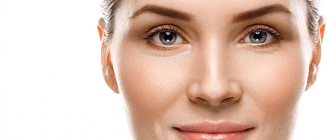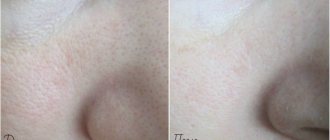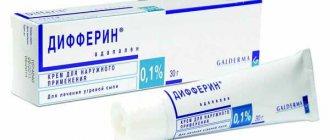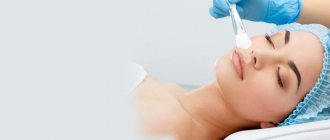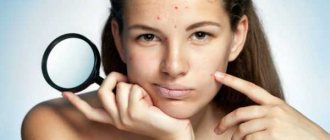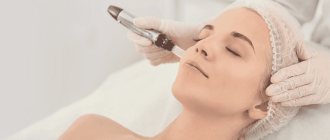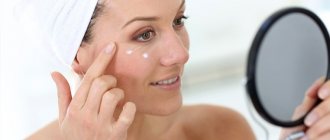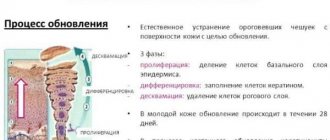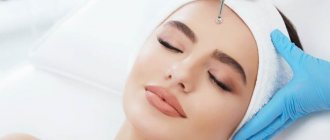This technology came to us in Russia from America. The devices for the procedure are manufactured by EdgeSystems (California). Today the procedure is one of the most popular in the world! Millions of patients around the world have fallen in love with Californian massage and are ready to sign up for HydraFashion again and again!
What is peeling and why is it needed?
Peeling (or exfoliation) is a cosmetic procedure designed to exfoliate the upper keratinized layer of the epidermis.
This exfoliating procedure is needed primarily when the client is dissatisfied with the condition of his skin. With age, renewal and restoration processes in the skin worsen, blood circulation and fluid outflow worsen. Facial peeling can solve many skin problems. The procedure activates the blood supply to the epidermis and helps restore metabolic processes. The skin after peeling looks much fresher, healthier and younger.
Facial peeling in the clinic allows you to eliminate the following skin imperfections:
- dark spots
- scars and remaining scars
- fine wrinkles
- inflammatory elements of acne
The cleansing procedure helps reduce inflammatory manifestations of acne on the face.
Professional facial peeling in a cosmetology clinic is very popular among women, as it allows you to get rid of many skin problems without the use of more serious procedures. The positive effect after manipulation can last up to a year. You can make an appointment by phone.
How is the procedure performed?
At the initial stage, the skin is cleansed of the stratum corneum, making it smooth and more even.
During the procedure, intensive rejuvenation serums are used: with a brightening effect, growth factors and to prolong the result after Botox injections - depending on the problem that needs to be solved.
Also, at each stage of the procedure, powerful hydration of the skin occurs, thanks to which the skin becomes nourished, radiant, and fine wrinkles are smoothed out.
Is peeling necessary and who is it indicated for?
Facial skin peeling is useful not only for older women, but also for young girls. The main indication is the patient’s desire to improve the condition of the skin. In this case, the decision on the need for peeling is made by a cosmetologist after assessing the client’s skin.
The procedure is recommended for the following problems:
- increased skin oiliness
- scarring
- comedones
- acne and post-acne
- skin aging
- hyperpigmentation
- keratosis
- change in complexion, unevenness
- enlarged pores
- sagging skin
- preparation before more serious cosmetic procedures
Idealist clinics guarantee a positive, visually noticeable result after the cleaning procedure. The center’s specialists practice a medical, individual approach to the problem.
Various types of facial peelings in cosmetology allow you to achieve the following effects:
- smoothing of skin relief
- removal of dead particles
- removal of contaminants
- increasing skin firmness and elasticity
- cleansing pores, normalizing their sizes
- pigment spot removal
- prevention of wrinkle formation
- saturation of tissues with oxygen
The cost of facial peeling from a cosmetologist corresponds to the resulting refreshing and rejuvenating effects.
Indications for exfoliation
With exfoliation you can get rid of many aesthetic problems. Exfoliation allows you to:
- smooth the surface of the skin;
- refresh your complexion;
- cleanse and tighten pores;
- open access of oxygen to the epidermis and dermis;
- make all subsequent care more effective.
Exfoliation helps remove small wrinkles from the stratum corneum of the skin, smooth out skin unevenness, remove waste products of the sebaceous and sweat glands, makeup residues, remove accumulated free radicals from the skin, stimulate regenerative processes, facilitate the rejection of the stratum corneum and create conditions for preparing the skin for the perception of various cosmetic masks and creams.
Exfoliation helps well with skin texture, skin porosity, the presence of comedones and skin hyperpigmentation.
What types of facial peeling are there?
There are several classifications of types of professional facial peeling. Based on the depth of cleaning procedures, they are divided into:
- superficial – work with the surface layer of the epidermis
- median – affecting the second layer of skin (dermis)
- deep – work with all layers of the skin, right down to the basement membrane (the place where the formation of skin cells begins)
Thus, peeling is the exfoliation of the skin to a strictly established depth, which is selected individually.
Deep facial peeling is prohibited in the Russian Federation. Cleansing the skin to the last layer of cell regeneration requires long-term rehabilitation with a stay in the hospital for some time. In addition, there is a high risk of developing complications that only worsen the condition of the skin. If a beauty clinic offers deep peeling, they most likely have a gradation of mid-level procedures. Beware of scammers, check all cosmetology certificates and licenses. And to get a guaranteed positive result from qualified cosmetologists with medical education, contact Idealist clinics.
Peeling with minimal impact on the skin can be done independently. Stores sell various gels and creams with abrasive particles. You cannot expect too noticeable effects from such a procedure, but you can cleanse the skin of large, flaky particles.
Based on the type of exfoliation, the procedure is divided into the following types:
- Mechanical. The top layer of the epidermis is exfoliated manually. If you perform this cleansing technique at home, you need to use abrasive particles at the moment when the skin is most steamed.
- Chemical peeling for face. The most common technique in modern conditions. Clinics use different formulations to cleanse the skin. A professional cosmetologist clearly controls the level to which the skin is cleansed. The chemical composition is applied to the skin, after which you should wait a while and then apply a neutralizer. The resulting mixture is carefully washed off.
- Hardware. The technique is performed using special devices: ultrasound, laser facial peeling. Mechanical cleaning can also be carried out using equipment.
A cosmetologist with extensive experience will help you choose which facial peeling is most effective. Each cleaning technique has its own advantages, so selection is carried out individually, taking into account skin problems, its structure, and age-related changes. Facial care after peeling also depends on the chosen procedure technique. The cosmetologist's recommendations must be carefully followed.
The main thing about the HydraFacial procedure
This healing procedure is a new word in aesthetic medicine and cosmetology.
The main impression from the procedure is complete bliss! In the hour during which the procedure lasts, you can relax, rest, and restore strength for new things. HydraFashle feels like a general healing body massage - the same relaxation, but only for the face!
The procedure is based on the innovative Vortex-Fusion technology, which combines mechanical exfoliation, the effects of multifunctional serums and vacuum skin stimulation. Thanks to this, HydraFacial provides effective skin treatment. One procedure combines SPA cleansing, chemical peeling, microdermabrasion and non-injection mesotherapy.
The procedure includes 6 main stages, each of which has a healing effect on the skin. Unique patented HydroPeel attachments and basic active serums are used at all stages. Acid peels and special anti-aging boosters are recommended to be used optionally at certain stages.
What is the best facial peeling?
Criteria for choosing the optimal type of peeling:
- desired effect (what exactly the client wants to achieve)
- expected frequency of procedures
- recovery duration
- post-procedure care
- presence of contraindications
If you want to do the procedure in the spring-summer period, then there are some types of exfoliation with components that do not increase sensitivity to sunlight:
- almond facial peeling
- wine peeling
- milk peeling for face
- phytin peeling
- apple peeling for face
- lemon peeling
- enzyme peeling for face
In the summer, you can only do mild facial peeling, and postpone deeper procedures until autumn and winter. But even when performing the procedure in the summer, we must not forget about using sunscreens with a high SPF level.
Stages of facial cleansing
Combined facial cleansing includes 12 stages:
- Cleansing (FOAM CLEANSE) – oat amino acids provide gentle cleansing of the skin without causing dryness. Glycerin moisturizes the surface layers of the skin, and medicinal plant extracts protect the skin from the effects of free radicals.
- EXFOLIATING POLISH – ultra-thin magnesium crystals exfoliate dead skin cells and also improve the effectiveness of other cosmeceutical components.
- Activation of exfoliation (EXFOLIATING POLISH ACTIVATOR) – lactic acid ensures full cellular respiration, evens out the tone and relief of the dermis.
- Preparation for peeling (STIMULATION PEEL PREP) – the solution eliminates the epidermal barrier for improved penetration of peeling, natural extracts relieve inflammation and do not irritate the dermis.
- Stimulating peeling for all skin types (STIMULATION PEEL) – alpha hydroxy acids accelerate epidermal renewal, a unique complex provides lightening and relieves skin redness.
- Neutralization of peeling (PEEL NEUTRALIZER) – sodium bicarbonate solution neutralizes the effect of peeling, restoring the pH of the dermis; The neutralizer prepares the skin for thorough cleansing, softening subcutaneous sebum.
- Massage (ALOE HYDRA MASQUE) – accelerates blood circulation and cellular metabolic processes, brown algae extract moisturizes and retains moisture in the subcutaneous layers, plant extracts neutralize irritation and redness of the skin.
- Facial skin cleansing - step-by-step treatment with an ultrasonic scrubber of all areas of the face with manual treatment of problem areas.
- Mask (SULFUR MASQUE) – 10% sulfur content relieves inflammation and irritation, kaolin and bentonite tighten pores, and glycerin moisturizes and forms a water-lipid film.
- Protection (DAILY POWER DEFENSE) – enzymes accelerate DNA repair, ceramides-6 moisturize and restore the skin’s protective barrier, vitamin E provides powerful antioxidant protection, Matrixyl 3000 activates the synthesis of collagen fibers.
- Moisturizing (RENEWAL CREME) – hyaluronic acid and jojoba essential oil are responsible for moisturizing the skin, and photosomes protect the dermis from harmful ultraviolet radiation.
- Sun protection (SUNSCREEN BROAD SPECTRUM SPF 30 UVA,UVB,HEV) – mattifying cream with physical filters UVA/UVB/HEV stimulates renewal, soothes and restores the skin after procedures.
The average duration of combined peeling does not exceed 1.5 hours.
Precautionary measures
Serious facial peeling is a seasonal procedure, since the absence of exposure to direct sunlight and frosty wind in the facial area is of great importance.
Reasons for such precautions:
- sunlight increases the risk of developing hyperpigmentation
- wind injures the skin and slows down healing
- sudden temperature changes increase redness
If you have the opportunity to stay at home constantly during the recovery period, then you can carry out the procedure at any time of the year.
Effect of the procedure
A correctly selected and performed exfoliation procedure gives clients visible results immediately after the end of the rehabilitation period. This is one of the few manipulations that provide long-term improvement in the condition of the skin.
Main effects of the procedure:
- Skin looks younger. Minor wrinkles disappear. The process of formation of new defects slows down.
- Skin looks cleaner. Pores are narrowed, tone is evened out. The skin is saturated with useful components and becomes healthier.
- The elasticity and firmness of the skin increases. Signs of aging are eliminated: sagging, pigmented spots, decrepitude.
- Visible defects of the skin disappear: the effects of acne, small scars, scars.
The result of peeling largely depends on the qualifications of the cosmetologist who performed the procedure. The specialists of the Idealist clinics have extensive experience, regularly undergo advanced training in working with various peelings, and are very attentive to each client. Facial peeling performed by cosmetology professionals is a wonderful prevention of aging.
Varieties
For superficial chemical exfoliation, acids are used in low concentrations. The effect largely depends on the type of acid.
- Lactic (lactic) acid is ideal for delicate, sensitive skin, although it is also good for other types. This is the most delicate peeling, which is recommended for refreshing the complexion and eliminating fine wrinkles. Milk peeling slightly whitens the epidermis and gives it freshness.
- For almond peeling, phenoxyglycolic acid is used, which is extracted from bitter almond extract. This is also a very delicate preparation, suitable for sensitive thin skin, since mandelic acid molecules are large and cannot penetrate deeply. Almond exfoliation can be used for rosacea. It is effective in treating acne and eliminating mild signs of aging. Unlike many other types of peelings, almond peeling can be performed in the summer.
- Glycolic peeling is extremely popular due to its versatility. It is indicated for problematic skin prone to inflammation and acne (Efficacy and safety of superficial chemical peeling during treatment). Glycolic acid, found in grapes, sugar beets and some other plants, effectively tightens pores and gives the face a healthy appearance. The procedure is recommended for eliminating hyperpigmentation and treating seborrhea, as well as skin rejuvenation. Since glycolic acid molecules are very small, they penetrate deep into the dermis and stimulate cell renewal. As a result, the skin looks younger, tightens and becomes elastic.
- Pyruvic peeling is also called “green peeling”. This option is recommended for problem skin with acne. The drug has a pronounced anti-inflammatory effect and does not dry out the epidermis. Pyruvic acid molecules have high penetrating ability. When applied to the skin, pyruvic acid is converted into lactic acid and has a moisturizing effect.
- Salicylic peeling is performed using 15% salicylic acid. This option is ideal for combating comedones - the acid has a keratolytic effect, it dissolves sebaceous plugs and cleanses pores. This exfoliation is also carried out before retinoic to enhance its effect.
- Retinoic (yellow) peeling contains retinoids - synthetic analogues of vitamin A. They act not so much on the stratum corneum as on the basal layer, stimulating cell production and skin renewal. Thus, exfoliation of the top layer occurs not from the outside, but from the inside. Thanks to the increased production of collagen and elastin, the elasticity of the epidermis increases and the skin tightens. The procedure is indicated for pigmentation, as well as for correcting age-related changes.
The cosmetologist will tell you which drug to choose after the examination. Each variety has its own advantages, disadvantages, indications, contraindications, and specific effects. If you want to achieve the best effect, trust your doctor.
How to care for your skin after sessions?
The result of facial peeling largely depends on subsequent skin care.
Recommendations
1
You need to wash your face every morning and evening without using soap. You can use neutral cleansing foams. You need to wipe your face with gentle blotting movements.
2
Places where the skin peels should not be torn off. You need to be very careful with the crusts that have formed, because touching them can slow down healing and increase the risk of complications.
3
Recovery from a mid-peeling may be accompanied by moderate pain. Let's take painkillers. You can’t wash your face for 2 days.
4
Refusal of serious physical activity.
5
Walking in the fresh air has a positive effect on healing. However, direct sunlight should be avoided: use hats and protective creams.
6
Decorative cosmetics can be used a week after the procedure. Not earlier.
After the procedure
After exfoliation is completed, the acid composition is washed off the face. In this case, not ordinary water is used, but special neutralizing compounds. Then you can leave the clinic - superficial peels are safe, and a doctor’s supervision after exposure is not required.
After 1–2 days, the skin begins to peel off. The degree of peeling depends on the drug used and the characteristics of the body, and sometimes on the number of sessions. These days, care should be especially careful, following all the doctor’s recommendations.
Contraindications for which peeling should be avoided
When planning a cosmetic procedure, you need to clearly know the contraindications for facial peeling. They can be absolute - manipulation is completely prohibited, and relative - the procedure is not carried out temporarily, but the decision is made individually.
Absolute contraindications:
- Chronic skin diseases. Many of them are not cured completely, and skin damage contributes to the development of exacerbations.
- Allergies to components of peeling preparations. A test is performed before the procedure, especially if the client has any allergic reactions to medications.
- Malignant tumors of any location. Especially during chemotherapy.
- Cardiovascular diseases in the stage of decompensation. The procedure damages the skin and, accordingly, puts a strain on the vascular system.
- Benign neoplasms in the area of manipulation. Peeling is carried out only after these formations have been removed.
- Diseases in the blood coagulation system.
- Neurological disorders accompanied by various attacks of convulsive activity (most often epilepsy).
Relative contraindications for which the session is postponed:
- Herpetic infection in the area of manipulation.
- Infectious diseases.
- Active inflammation of the skin (dermatitis of various natures).
- Pregnancy and breastfeeding (facial peeling is not performed during pregnancy due to the lack of knowledge of the effect of the procedure on the expectant mother and fetus).
- Wound surfaces on the face, including abrasions and hematomas.
- Taking drugs that affect blood clotting (if permissible, then stop taking them 2 weeks before exfoliation, but this can only be done after the permission of the attending physician who prescribed these drugs).
Advantages and disadvantages
Any cosmetic procedure, including facial peeling, has its positive and negative sides.
Peeling benefits:
- quick execution (the procedure lasts approximately 30 minutes or less)
- high efficiency (visually noticeable result)
- recovery (light facial peeling requires virtually no rehabilitation, and the deepest types of procedure require recovery in a maximum of 5 days)
- long lasting effect (up to a year)
Negative aspects of the procedure:
- seasonality of the procedure (the best facial peels are performed in the autumn-winter period, when exposure to ultraviolet radiation is minimal)
- risk of complications (rashes, scars, pigmented spots)
- the need for careful skin care after peeling (the result depends on the correct care)
- the procedure should not be performed frequently (the skin must have time to renew itself)
Specialists at the Idealist Clinic minimize all the negative aspects of peeling, provide comprehensive recommendations for skin care, and individually determine the frequency of the procedure.
